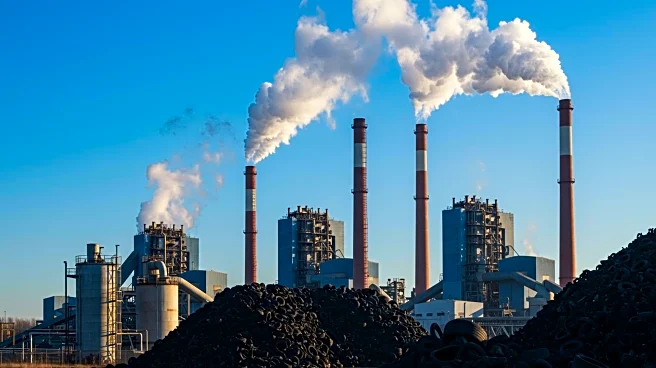What's Happening?
Researchers have explored the use of tire pyrolysis as a method for managing mining waste in Iran. This process involves the thermal decomposition of waste tires to recover valuable materials such as liquid oil, solid char, and gases. The study focused on tires from large Iranian open-pit mines, using a custom-designed reactor to simulate industrial conditions. The pyrolysis was conducted at various temperatures to determine optimal conditions for maximum yield. The results showed significant production of liquid oil and char, with the process proving effective in breaking down the complex polymer structures of the tires.
Why It's Important?
The application of tire pyrolysis in mining waste management presents a sustainable solution to a significant environmental challenge. By converting waste tires into reusable materials, the process reduces the ecological impact of tire disposal and offers economic benefits through material recovery. The production of hydrocarbons and carbon black from the pyrolysis process can be used in various industrial applications, adding value to what would otherwise be waste. This approach aligns with global efforts to enhance sustainability in mining operations and could serve as a model for other regions facing similar waste management issues.
What's Next?
The successful implementation of tire pyrolysis in Iran could lead to broader adoption of this technology in other mining regions. Further research and development may focus on optimizing the process for different types of tires and mining conditions. The integration of pyrolysis into existing waste management frameworks will require collaboration between industry stakeholders, researchers, and policymakers to address technical and regulatory challenges.
Beyond the Headlines
The adoption of tire pyrolysis highlights the potential for innovative waste management solutions to contribute to environmental sustainability. It underscores the importance of developing technologies that not only address waste disposal but also create economic opportunities through resource recovery. This approach could inspire similar initiatives in other industries facing waste management challenges.












